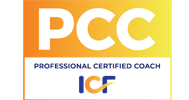
Nadia Prescott
That is assuming you are an organization with a staff! When there is staff, what is appropriate communication is always a thorny topic, outside of the accepted relationship between the executive director and the board.
A board’s responsibility is as a group is to govern and be fiscally responsible for the organization. As an individual, each board member has a role to support the organization.
If we take this basic concept, then logically, there must be communication between board and staff members. It is both necessary and appropriate. Board members may want and need more contact. For example, the board treasurer may need to meet periodically with the financial controller to finalize financial reports or audits. If your organization hosts a major fundraising event, you want board members engaged as individuals. And you need their oversight as a board.
I’ve often attended board meetings where the appropriate senior staff person attends the relevant part of a board meeting to provide specific information on a new initiative, updated program data or fundraising.
But here’s where it gets tricky. The executive director might feel their authority is undermined or concerned that misleading information will be shared. Restricting access can also lead to suspicion on the part of the board. Yet that said there are simply not enough hours in the day for an Executive Director to attend every meeting with individual board members or every committee, so appropriate communication helps an executive director be more productive.
What this comes down to, in my experience, is having agreed-upon boundaries and guidelines that are approved by the Board and the Executive Director and reviewed or updated as necessary, for example, when a new board member joins the organization. Things to consider include:
- The Board of Directors collectively in its governing capacity may provide direction to the executive director
- The executive director should be copied on any correspondence between a board member and a staff member. If a board member makes a request via phone for a meeting with a staff member, as a common courtesy that staff member should advise the executive director about the meeting and give a brief summary to the board member and executive director at the end of the meeting.
- Information that already exists, such as a financial statement or client evaluation report, can be requested by board members. Requests for new information that will take staff away from their existing roles must be discussed with the executive director.
- There must always be a whistleblower policy in place. This is important to comply with federal law. If you are a nonprofit that has completed your Giving Common Profile, you will see one of the questions asked is whether this in place.
- Personal grievances should be addressed through whatever policy is specified in the staff manual.
- Make sure your board meetings have executive sessions. This gives the board a way to address any staff issues without the staff present. Even the executive director. Having this set up is an established process is much better than setting this up when an issue arises!
You want to strive to create an open and respectful culture with the necessary boundaries that will avert issues that can undermine the very important relationship between the executive director and the board. Setting up these guidelines will also ensure that staff knows they can communicate with board members and how to engage.
Finally, it is also important for staff to know who to turn to if they feel there is an issue the board needs to be aware of. Especially if that involves executive staff. Obviously, this will be different depending on the organization size. For a lean grassroots organization, the go-to person might be the board chair who will decide to bring the issue to the Executive Director, or to the executive session for discussion and agreement on how to move forward. In a larger organization, this might be the human resources department.
If the role of the board is to hold the organization accountable to the public, then important information must be shared. It is your role as a governing body to create the guidelines and the safe environment to ensure the necessary communication happens in a respectful way.
If you need more advice on helping your board communicate more effectively, please contact us at nadia@emergingexecutive.com



